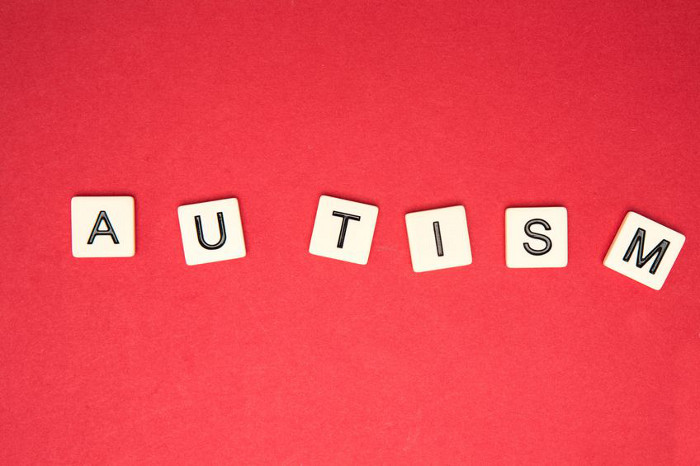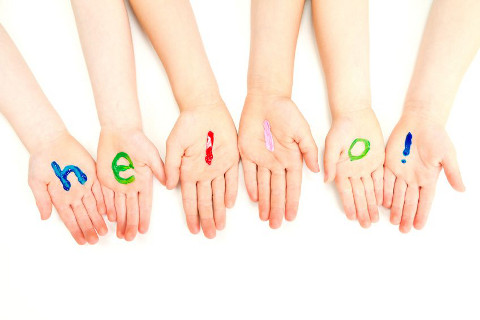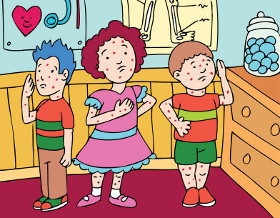Autism is neurological in nature, affecting the brain in four areas of functioning: language, communication, social skills, sensory and behaviours.
Individuals on this spectrum range from those who are non-verbal with severe functional challenges and behaviours, to individuals who are extremely intelligent, with good expressive abilities, yet display markedly impaired social functioning with weak perspective-taking abilities.
What would children or people with autism want you to know?

Understanding Children With Autism: 4 Things To Note
#1 Visually-oriented
People with autism think like a Google search engine in which you type keywords and it produces a lot of specific pictures. This is an asset for a creative mind and complements an engineering mind, which is a sequential thinker.
They may have savant abilities involving mathematical calculations, memory feats and musical abilities as they retain strong visual images, which capture all the details with accuracy. However, they may lose these skills when they become more social and develop their language.
➡️ Related Read: Learn More About Autism This World Autism Day @ Museum of Ice Cream
#2 Speak to a different tune
Most people with autism, especially those who are nonverbal or have limited verbal skills, express and communicate their needs and wants through their behaviour and body language.
People with autism also display restricted, repetitive patterns of behaviour, interests or activities. Some may display an obsessive interest in something, follow inflexible routines and rituals and make repetitive body movements.
They may have persistent challenges with social communication and social interaction. Some might find it hard to start conversations and follow through with them.
They may not understand social rules and have a hard time making and keeping friends, companions, lovers or any kind of relationship. It can be frustrating for them that they are not able to speak even though they might understand what was being said.
It is also hard for them to concentrate on a conversation because they have problems tuning and filtering what they hear. They can be hypersensitive especially if they are bombarded with sudden or confusing noises. It is easier for them to tune in and out. In more severe cases, they would have a meltdown and shut down to their surroundings.
They could also have problems with executing smooth coordinated movements and even though, they could have an innate talent for pitch and melody, they are unable to synchronise their rhythm with somebody else’s. In social situations, they might be accused of interrupting or breaking a conversation due to this faulty sense of rhythm.
Most people with autism have difficulty processing everyday sensory information and those who struggle to deal with all this information are likely to be stressed or anxious, and possibly feel physical discomfort or pain.
As a result, they can appear with challenging behavioural challenges such as aggression, self-injury, mental health challenges such as anxiety, depression, insomnia and have distressful gastrointestinal problems such as acid reflux.
➡️ Related Read: Caring For A Child with Autism
These issues do not only belong to those who have autism but it impacts those caring for them. On top of the worries and exhaustion of looking after someone with autism, caregivers also face the frustration of trying to cope with society’s ignorance and prejudice and become frustrated with the lack of high-quality information and poor quality of services designed to create results for them.
#3 Don’t get hung up on labels
➡️ Related Read: 10 Misconceptions of Autism
Look at what people with autism can do, and not what they can’t do. If little Albert Einstein was here today, he would probably be labelled on the autism spectrum as he displayed the common traits of autism. If we defined him by these traits, we may have run the risk of not realising his potential and innovative brilliance.
How about Steve Jobs? He was a loner who brought snakes to his elementary school and turned them loose. He was bullied and teased and what saved him was participating in a neighbourhood computer club.
His childhood behaviours and documented qualities such as obsession for details, perfectionism and ‘thinking out of the box’ sure fit the profile of a person with autism and he revolutionised Apple!
Every person with autism is unique with a different profile of strengths, challenges and traits that change in intensities and presentation as they develop over time with unique life experiences and education. However, labels do matter when people with autism need to get access to relevant services, enabling environment or inclusive spaces to thrive in.
#4 Because they can too
Some of the most successful high functioning people with autism have directed childhood fixations into careers. For example, an individual with autism who fixates on colours can use this highly focused interest to develop his expression through art, which then could lead to a career as an artist. Of course, the principle can also be used with lower functioning people with autism.
Fixations should not be seen as a limitation and be stamped out. Instead, fixations can be tremendous motivators for people with autism and need to be broadened into constructive activities.
Even if the individual in my earlier example is not able to pursue his or her career as an artist, this interest shows his skills for attention to detail and photographic memory and these exact skill sets could be used as an advantage to maximise their talent areas and minimise their deficits.
Instead of viewing autism as a disability that requires sympathy and feeling sorry for people diagnosed with it, recognise them as a valuable diversity and make concrete commitments to reduce inequality and promote inclusivity so that they can have better quality lives and realise their full potential in our so-called ‘neuro-typical world’.
By Sid Hamid, Consultant Occupational Therapist and Founder & Director of Oxytoseen Pte Ltd.
This article was first published in The New Age Parents e-magazine.
* * * * *
Like what you see here? Get parenting tips and stories straight to your inbox! Join our mailing list here.
Want to be heard 👂 and seen 👀 by over 100,000 parents in Singapore? We can help! Leave your contact here and we’ll be in touch.





























































Leave a Comment: